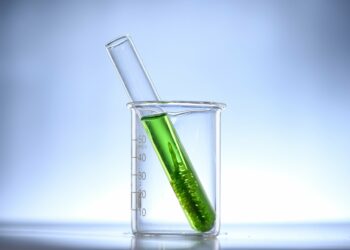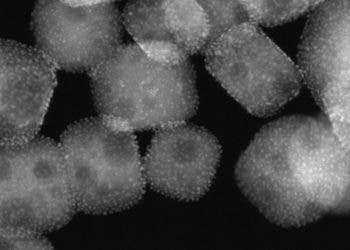Researchers at University of Utah have demonstrated for the first time a working biological fuel cell that uses enzymes to convert jet fuel into electricity; all at room temperature. Fuel cells are much cleaner and efficient at producing energy than internal combustion engines – theoretically, fuel cells can be up to four times more efficient since the energy conversion is electrochemical and if hydrogen is used, the emissions are zero, nil.
Fuel cell on jet fuel

A fuel cell is similar to a battery in that it has an anode, cathode, and electrolyte and creates electricity, but it uses fuel to create a continuous flow of electricity. Typically, a fuel – hydrogen, carbon monoxide, methanol etc – reacts with a catalyst, becomes ionized and reacts with oxygen at the anode. Free electron are generated in the process which flow through a circuit creating electricity. While batteries are common in mobile devices, fuel cells are typically employed in buildings where excess renewable energy is converted into chemical fuel for later use.
[ALSO READ] US navy synthesizes jet fuel solely out of seawater; costs $3-6 gallon
This isn’t the first time that jet fuel has been used in a fuel cell. This summer, Washington State University demonstrated a solid-oxide fuel cell that runs on jet fuel to provide electrical power on commercial airplanes. The system coming off the University of Utah lab, however, works on Jet Propellant-8 or JP-8, a kerosene-based jet fuel that is used by the U.S. military in extreme conditions such as scorching deserts or subzero temperatures. Most importantly, the fuel cell works at room temperature, as opposed to 950 degrees Fahrenheit (510 degrees Celsius) in other models, and uses enzymes – biological catalysts – instead of solid metal catalysts.
“The major advance in this research is the ability to use Jet Propellant-8 directly in a fuel cell without having to remove sulfur impurities or operate at very high temperature,” says the study’s senior author, Shelley Minteer, a University of Utah professor of materials science and engineering, and also chemistry. “This work shows that JP-8 and probably others can be used as fuels for low-temperature fuel cells with the right catalysts.” Catalysts are chemicals that speed reactions between other chemicals.
Jet fuel is really hard to convert to electricity without igniting it since it contains sulfur, which can impair metal catalysts used to oxidize fuel in traditional fuel cells. Also, this highly complex fuel needs to be split into simpler components like hydrogen or carbon monoxide. Clearly, there were a lot of challenges the researchers had to overcome.
[INTERESTING] New affordable fuel cells might spark microgrid revolution – a new age of energy independency
An enzyme “cascade” of two enzymes – alkane monooxygenase and alcohol oxidase – was used to catalyze JP-8. Hexane and octane, which are chemically similar to JP-8, also were tested as fuels. The researchers found that adding sulfur to their enzymatic fuel cell did not reduce power production.
“Enzymatic fuel cells are a newer type of fuel cell, so they are not currently on the market,” says Minteer, also a professor with USTAR, the Utah Science Technology and Research economic development initiative. “However, researchers haven’t been able to use JP-8 before, because they haven’t had the enzymes to be able to oxidize JP-8.”
Now that they’ve demonstrated a working version, the researchers next plan on improving its efficiency. The findings appeared in the American Chemical Society journal ACS Catalysis.






